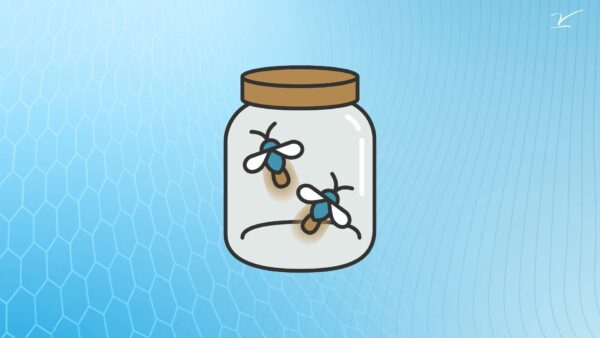Susanna’s Cool Cancer Research Finds: August 2024
Every week, Dr. Susanna Greer, the V Foundation's Chief Scientific Officer, shares her cool cancer research finds on LinkedIn. Read more below to see highlights from the latest top finds!
July 30th, 2024
A ‘Gold Medal’ in Cancer Discovery
If there were an Olympics for cancer researchers, the V Foundation Grantee Dr. Ferdinando Pucci, PhD OHSU Knight Cancer Institute would be a Gold Medal winner: his lab is going the extra mile for innovation in cancer research in this week’s Cool Cancer Find where he dives into extracellular vesicles (EV’s) and their ability to revolutionize our approach to cancer treatment.
To understand EV’s, imagine your body as a city where cells act as citizens, needing a way to communicate. These cells use tiny delivery drones called extracellular vesicles (EV’s) to send and exchange important information.
Researchers including Dr. Pucci and team have developed cool ways to track these drones, similar to fitting them with GPS trackers, to see where they travel in the body.
 Dr. Pucci genetically engineered EV’s in donor cells that light up like fireflies, making it easier to track the drones’ paths. He has also shown that he can stop these drones to better understand their role. The Pucci lab found that EVs often end up in lymph nodes, where immune cells called macrophages capture them. These macrophages then act like security guards, checking the contents of the EVs.
Dr. Pucci genetically engineered EV’s in donor cells that light up like fireflies, making it easier to track the drones’ paths. He has also shown that he can stop these drones to better understand their role. The Pucci lab found that EVs often end up in lymph nodes, where immune cells called macrophages capture them. These macrophages then act like security guards, checking the contents of the EVs.
Finally, instead of tagging the EVs themselves, Dr. Pucci can tag the recipient cells that interact with EVs. This method acts like a special ink that marks recipient cells when EVs bind to them. This tool provides clearer and more specific labeling compared to other methods. It’s like having a high-definition map showing exactly where each drone delivers its message.
So, how does all of this relate to cancer? The more we learn about EV’s, we can in turn use EV’s to study how cancer stem cells interact with their environment and other cells, providing valuable insights into cancer progression. And, if it turns out that cancer cells use EVs to spread harmful messages, we can block these communications, potentially stopping cancer from spreading. By harnessing the power of EVs, we might also deliver targeted therapies directly to cancer cells, making treatments more effective and reducing side effects. Which all sounds to me like key steps towards revolutionizing our approaches to cancer treatments. #gold medal for Team Pucci.
Find the lab at Ferdinando Pucci | OHSU People | OHSU and read their latest paper at Frontiers | A case for the study of native extracellular vesicles (frontiersin.org).
July 24th, 2024
The state of prostate cancer is changing.
Prostate cancer is a disease where cells in the prostate gland grow uncontrollably. In recent years, researchers have developed treatments that target specific proteins on the surface of prostate cancer cells, like tiny flags that help identify and attack them. But not all prostate patients’ cancer cells have the same flags, and these flags can change over time, especially in aggressive forms of cancer. So, selecting which patients will benefit most from these treatments requires understanding how these proteins vary among patients.
 This incredibly cool study from the V Foundation Grantee Dr. Michael Haffner and team at the Fred Hutch Cancer Center showed that traditional methods don’t fully capture the variety of cancer cell types, especially in advanced prostate cancer. Dr. Haffner and colleagues found that specific gene patterns can help oncologists more accurately diagnose and treat prostate cancer by understanding these cell surface proteins.
This incredibly cool study from the V Foundation Grantee Dr. Michael Haffner and team at the Fred Hutch Cancer Center showed that traditional methods don’t fully capture the variety of cancer cell types, especially in advanced prostate cancer. Dr. Haffner and colleagues found that specific gene patterns can help oncologists more accurately diagnose and treat prostate cancer by understanding these cell surface proteins.
Imagine trying to hit a moving target that also changes its appearance frequently. This is one challenge oncologists face when treating prostate cancer. To better understand their “target,” The Haffner group analyzed prostate cancer cells from patients and mice. They found that the cancer cells were much more diverse than expected, with different types of cells showing up in the same tumor. This diversity means that a treatment targeting one type of cell might miss others.
One of the main discoveries the team made was that the level of certain proteins on the surface of cancer cells also varied widely, even among patients with the same type of cancer. These protein markers are crucial, because they are the targets for many new therapies. If a patient’s cancer cells don’t ‘have’ the ‘right’ markers, or if the markers change over time, the treatment might not work as well.
 Bottom line: this study suggests that current methods of classifying prostate cancer might be too simplistic. By using more detailed analyses, oncologists can get a better picture of a tumor’s makeup. This could lead to more personalized and effective treatments and allow therapies to be chosen based on the specific characteristics of each patient’s cancer.
Bottom line: this study suggests that current methods of classifying prostate cancer might be too simplistic. By using more detailed analyses, oncologists can get a better picture of a tumor’s makeup. This could lead to more personalized and effective treatments and allow therapies to be chosen based on the specific characteristics of each patient’s cancer.
By understanding the diverse and changing nature of cancer cells, we can improve the chances of finding the right treatment for each patient, potentially leading to better outcomes and longer survival. I love this paper, these findings, this research. Awesome job Dr. Haffner!
You can read Dr. Haffner’s paper here https://doi.org/10.1073/pnas.2322203121 and find the lab at https://www.fredhutch.org/en/faculty-lab-directory/haffner-michael.html.
August 8th, 2024
Unzipping truths behind BRCA
The focus of this week’s Cool Cancer Find comes from the lab of the V Foundation Grantee Dr. Priyanka Verma at Siteman Cancer Center. The Verma lab studies changes (mutations) in genes like BRCA. BRCA mutations are changes in either of the BRCA1 or BRCA2 genes, which are responsible for producing proteins that help repair damaged DNA. These genes are crucial for maintaining the stability of a cell’s genetic material. When either of these genes is mutated, the resulting protein doesn’t function properly, leading to an increased risk of developing certain cancers, particularly breast and ovarian cancer.
 A major challenge in treating cancers, especially those with BRCA mutations, is finding ways to exploit these vulnerabilities to kill cancer cells while sparing healthy ones. One promising approach involves using PARP inhibitors (PARPi), which trap repair enzymes at sites of DNA damage, preventing cancer cells from fixing their DNA and causing them to die. However, not all cancer cells respond equally to these drugs, and understanding the underlying mechanisms is key to improving treatment.
A major challenge in treating cancers, especially those with BRCA mutations, is finding ways to exploit these vulnerabilities to kill cancer cells while sparing healthy ones. One promising approach involves using PARP inhibitors (PARPi), which trap repair enzymes at sites of DNA damage, preventing cancer cells from fixing their DNA and causing them to die. However, not all cancer cells respond equally to these drugs, and understanding the underlying mechanisms is key to improving treatment.
The research in the Verma lab is particularly cool because it sheds light on why some cancer cells are sensitive to PARP inhibitors. At the core of the problem is a protein called ALC1, which acts like a locksmith for DNA, unlocking hidden damage sites so another protein, APE1, can repair them. When ALC1 is missing, these hidden damage sites accumulate and only become accessible during DNA replication, causing breaks and stalling the process. These replication-induced breaks make cancer cells more vulnerable to PARP inhibitors because the drugs trap repair enzymes at these breaks, preventing the resumption of DNA replication and leading to cell death.
 To put it simply, think of DNA as a zipper that can get stuck if it hits a broken tooth. Normally, ALC1 helps fix these broken teeth before the zipper gets there. Without ALC1, these breaks remain hidden until the zipper (DNA replication) hits them, causing it to jam and break further. PARP inhibitors trap the broken zipper, making it impossible for the cancer cell to continue growing.
To put it simply, think of DNA as a zipper that can get stuck if it hits a broken tooth. Normally, ALC1 helps fix these broken teeth before the zipper gets there. Without ALC1, these breaks remain hidden until the zipper (DNA replication) hits them, causing it to jam and break further. PARP inhibitors trap the broken zipper, making it impossible for the cancer cell to continue growing.
This incredible research provides a deeper understanding of how hidden DNA damage sites, when exposed, play a crucial role in making certain cancer cells highly sensitive to PARP inhibitors. These insights can help develop better-targeted treatments for cancers with BRCA mutations, potentially leading to more effective therapies with fewer side effects.
Read Dr. Verma’s paper here: Nucleolytic processing of abasic sites underlies PARP inhibitor hypersensitivity in ALC1-deficient BRCA mutant cancer cells | Nature Communications and find the lab at https://oncology.wustl.edu/people/priyanka-verma-phd/




